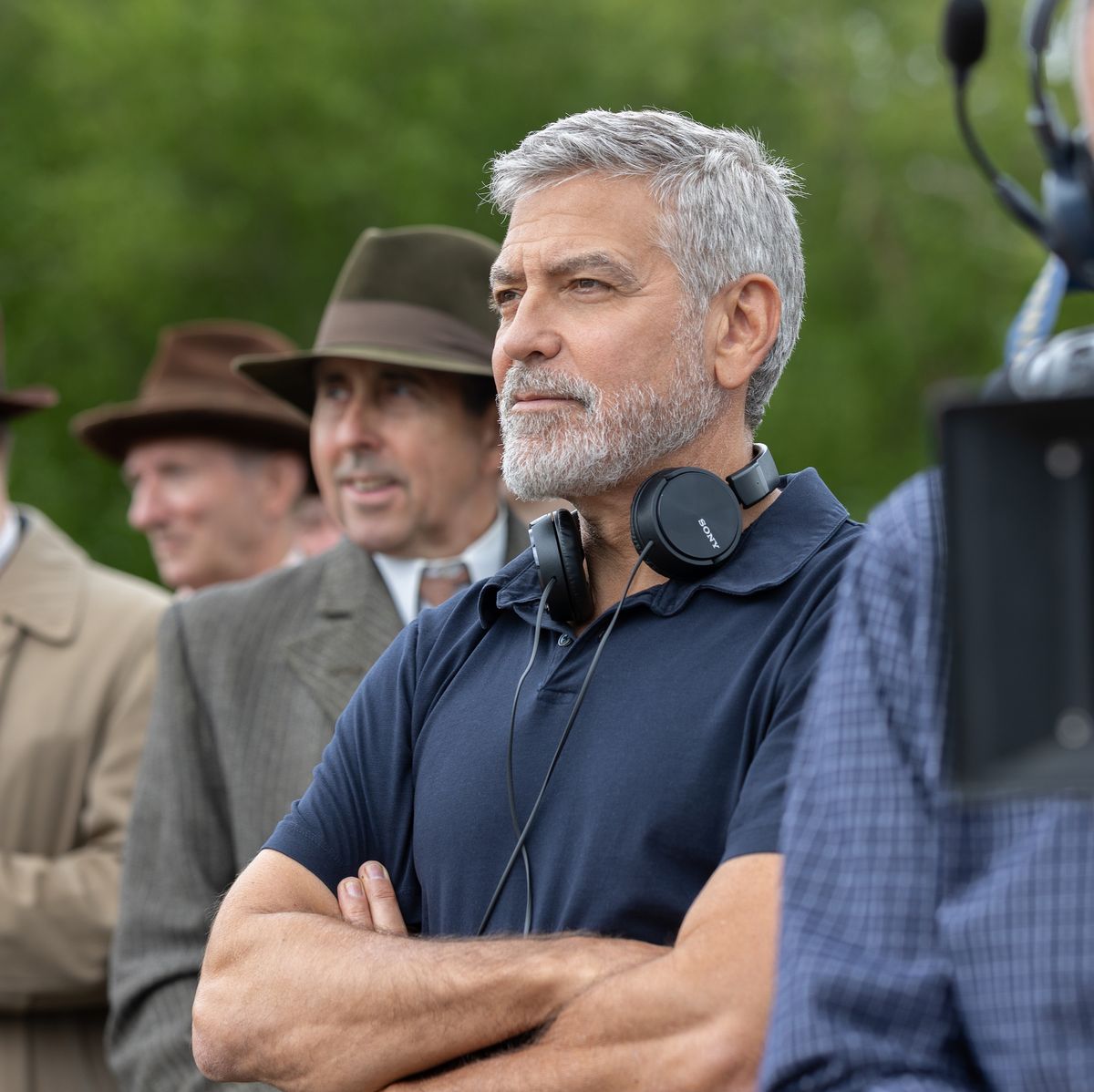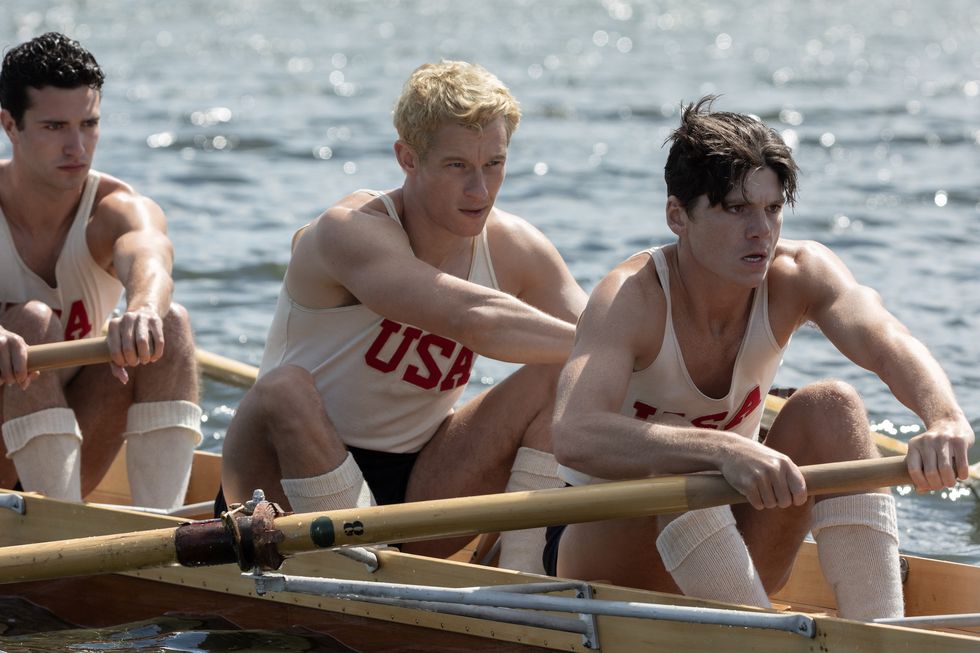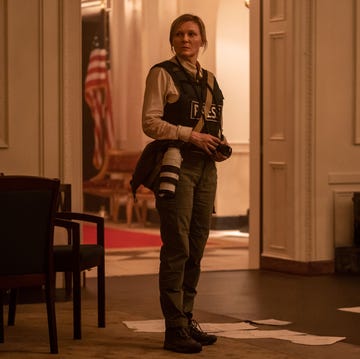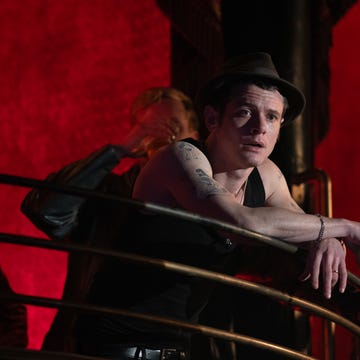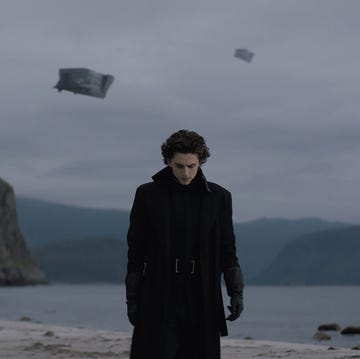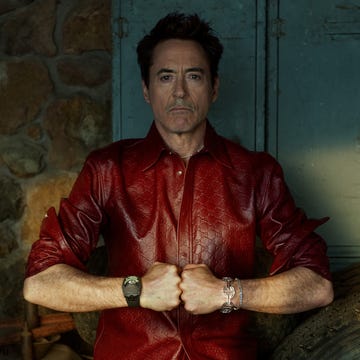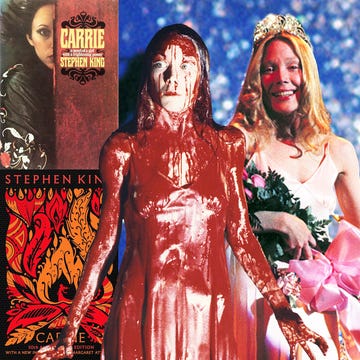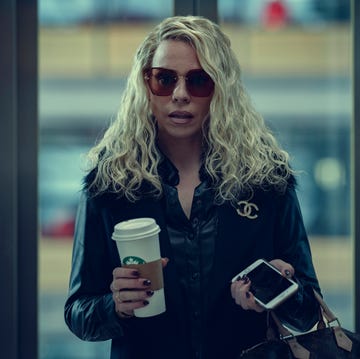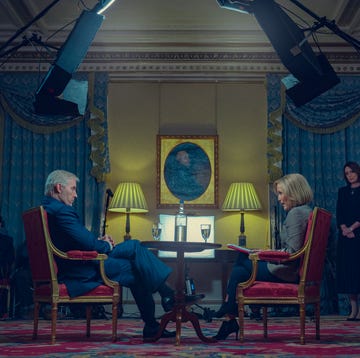How are your New Year’s fitness goals going? If you are flagging, perhaps The Boys in the Boat, in cinemas 12 January, could provide a jolt of much-needed inspiration.
The sports drama, George Clooney’s latest directing effort, is a stately, handsome affair. It is also based on a true story (you know it is true because if it were a piece of fiction, it would be deemed unbelievable): a rag-tag team of rowers from University of Washington who win national races and proceed to represent America at the 1936 Olympic games in Berlin. What makes the story even better is that these students were not trust fund brats born with rowing machines in their garage but mostly working class students who had not rowed before. The film’s lead character, Joe Rantz (played by Callum Turner), is effectively an orphan who only starts the sport because it is a paid gig at college.At a London hotel, Clooney and Turner talked through the underdog story with Esquire, from a gruelling training period to the secrets of a heart-racing racing scene.
I’ve watched rowing in real life and found it boring, but it’s exciting in this film. How did you pull that off?
George Clooney: Shooting it differently than we’ve seen it before. When you see rowing in film up until now, it never seems to capture the speed. Because these guys are actually moving pretty fast. They’re moving. But it’s like F1: when you’re watching it, it doesn’t look like it’s going very fast. So we had to get in closer and shoot on long lenses. We had to get as close as we could, even though you have these oars and the size of the boats. So it was about getting close and shooting low, that Leni Riefenstahl style of shooting up, which gives a little bit of the rower but also the water as a foreground for speed. And then the last part was a lot of cuts.
So you were on a boat too?
GC: I’m back in my trailer, drinking.
Callum Turner: Yeah, he was alongside us with a glass of wine, screaming “do it better” with a megaphone.
Did you get very wet?
GC: We got wet. But not like the guys, who were wearing short shorts in February.
There is a lot going on in the racing scenes. You’ve got other boats, as well as the audience on the side as well as the coaching team [head coach Al Ulbrickson is played by Joel Edgerton]. How do you choose what to focus on?
GC: You have to shoot with a point of view. The filmmakers that we all admire have points of view. The guys I grew up with and I learned from are Steven Soderbergh, the Coen Brothers, Alexander Payne. They pick who they want us to see, through their eyes, so it’s not just the star. We want to see through Joe Rantz’s eyes, we want to see his love story, we want to see the camaraderie. But we also want to see the point of view, for us as audience members, of the race. And because it’s not the boy on the boy on the boat, it’s the boys, we have to be able to see all of them together. We talked about when you get to the swing – the point where everyone is working as one – and we wanted to be able to see the oars flip over and go back and flip back at the same time. We wanted to see all of that poetry. And these guys got there – it took a while, but once we saw it, we were so thrilled. We were so thrilled the first time you got to that moment.
CT: It was euphoric. After three weeks, George and Grant [Heslov, the film’s producer] came to watch us at Radley [the boarding school in Oxfordshire], and we wanted to show off our new skills and it turned out we didn’t have any. And George gave a big thumbs up and a big smile but I could see the pain.
So you’d never been on a boat before?
CT: No I hadn’t. We had a wonderful experience at Radley. We started in February, and it was snowing. We initially started in the tank to learn the technique. By the time you go home, in the afternoon, and you’ve got to prepare the character and immerse yourself in the world. You’ve also got to rest your body, you stop drinking, you stop eating sugar, you’re on a crazy diet. And these guys provided nutritionists, and they gave us the best food to just be in the best physical shape. We all had this target, which was 46 strokes per minute in five months’ time. They told us we wouldn’t be able to do it. And somehow we managed it.
I suppose it was a bonding experience.
CT: The hard thing about rowing is you actually have to be in sync: everything has to be moving at the same time. We are all actors, and we are trying to do our own things. At the beginning of the book, when Dan [Daniel James Brown, who wrote the book on which the film is based] asked Joe if he could write it, he says, “you can write this book, but it can’t be about me, it has to be about the boat.” And actually the main character is the boat, it’s not Joe. That’s the energy you're following.
Talk to me about the first race you filmed, which is against the senior team at the college. Presumably when you got round to filming it, there were some pre-race nerves.
CT: No, because we knew we were going to win [laughs]. But we did have nerves as it was the first time we were presenting our new skill set.
GC: We were shooting that at Henley, two weeks before the regatta. So while we were there, there are all these real race cats around. And we’re like, “here go our boys, this is show biz,” and you don’t want to look terrible.
CT: The rowing community were really into it. They were very supportive the whole way through.
In the film, some of the rowers in the competing boats are real athletes.
GC: We had Olympic rowers, and sometimes we lost guys because they had to go compete somewhere. But we had a whole community of people that were playing a part of this, and they weren’t like, “fucking Hollywood” and treating these guys terribly. They were like, “okay, come on, we can make you guys look good.” And they really did help.
CT: I think because we treated it with respect, and we wanted to present the squad in a different light and do it properly.
The final race, which takes place at the Berlin Olympics, is quite different from the other two. You see Nazi flags but there is also celebration. Hitler is there. How did you set the right tone?
GC: Well, it’s tricky because you have several hundred extras yelling “Deutschland” and giving the Hitler salute. I’ve done a couple of those scenes, like in Monuments Men, and it’s never fun. I literally say to everybody – the extras and the background artists: “We’re about to do some really shitty stuff, but you know, it was real, and it happened.” The trick to this one was, this is 1936. And Hitler then wasn’t who we knew Hitler to become. Of course, he was, but we didn’t know. You know, most Americans hadn’t read Mein Kampf in 1936, and Kristallnacht hadn’t happened. They didn’t know where this was going to go. So we have to not be smarter than the time. Our guys have to think of these guys are annoying, but not as some of the worst of all time. You can’t look backwards and change where we were. It was one of those things of going, “no, no, no, you can’t be that mad at them, not yet.”
What was the atmosphere like on that day?
GC: Well, first of all, it was for a big event, right? We built a big set for it, so everything was bigger. But also, we’re doing these things in six-second pieces. That whole last race is 600 cuts. When we did Gravity, it was 450 cuts in the whole film. In order to make it energetic, and to keep it alive, you have to keep cutting. So you are shooting like that, too. You’re quick hands: so now it’s the Nazis, and then other boats, you’ve got a boat of Italians, now a boat of Hungarians. So constantly trying to shoot pieces that we knew we were going to be able to put together and know we have enough footage of these guys rowing really well, which we did, so that you could believe they could win. And by the end of the shoot, the last two days, they were up to 46 strokes per minute, which is really extraordinary.
Do you think you could still do 46 strokes?
CT: Give me five months.
Have you kept up at all?
CT: I haven’t. I’ve been reading the book again for the press, and it’s hitting me in a much deeper way. I really understand how beautiful rowing is. The coaches did tell me, “you’re going to create these bonds with these other guys on the team and you’ll make friends for life,” and I thought, “yeah, this is your sport.” But I did, and we achieved something together. And it’s a brilliant thing, and it keeps me fit, but it’s not with those guys. And I did something with eight other guys that was special. And it’s also not the same not having George alongside us, shouting “do it better”.
This interview has been edited and condensed for clarity.
‘The Boys in the Boat’ is in cinemas 12 January.
Henry Wong is a senior culture writer at Esquire, working across digital and print. He covers film, television, books, and art for the magazine, and also writes profiles.
